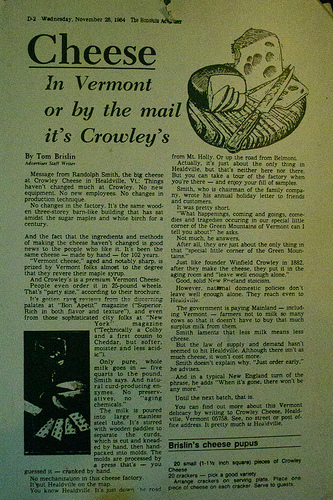It’s human nature. We try to protect what we have even though we know that change is coming. In this post I’ll bring out some real drivers of customer engagement, and provide some tactics to get ahead.
There has been lots of buzz that the store can never die (Amazon is also getting into physical now), and how customer experience must be enhanced instead to make the store a place of enjoyment and social interaction. That’s all very true. However the fact is that if we think of retail as a store, we’ll be in deep trouble. We need to think of deep customer engagement instead, and that starts with knowing who our customers are.
All the analytics so far hasn’t gotten us any closer and I’ll explain why here. You’ll see that the analytics needs to be directed differently.
Plain vanilla eCommerce won’t help either. Because eCommerce itself is changing as the world is connected. The game is not about channels, its about the customers and creating context aware visibility. “20% other customers also bought a tent” was a great model when it came out, but is not the way of the future.
What you need is t o think beyond the store, about how the store stocks items, how we run promotions, what amazing digital technology we have, and how the supply chain feeds into the store.
o think beyond the store, about how the store stocks items, how we run promotions, what amazing digital technology we have, and how the supply chain feeds into the store.
Instead let’s turn the entire paradigm on its head.
Ignore the store, and just think of who our customers are, what they want, and why they want it?
Because thinking of the store and our catalog is like looking inward. Instead, let’s look from the outside at what our business looks like – from the customer’s eyes.
When we start thinking like that we’ll notice that we don’t really know that much about the customers. What we really need is to think like a “marketplace” from the vantage point of our customers so that we can embark on a customer engagement strategy.
Here’s a supermarket example which will carry well to other scenarios as well:
1. What are customers thinking? Why do they pick up a Lean Cuisine meal? Why are they buying 3 packs of Tofu when they normally buy one? Why did they pick up both soy and dairy yogurt?
2. Then let’s go back to the drawing board for our business. How can we meet their needs better? We’ll find that they are buying for a party they’re hosting, they are on a diet trying to prepare for that upcoming full marathon, and they have a kid at home with food allergies.
3a. Then let’s bring together all the actors who will make our retail business aka “marketplace” thrive? Perhaps the local fitness center, the local nutritionist, a local restaurant, and the list will go on depending on what you want your business to be. You must engage customers in context, and tie in the places they go to.
3b. Then we establish a relationship with customers by finding a way to get in touch, and begin to address the core issue of customer engagement. It’s amazing how many retailers have no way to contact their customers?
3c. Finally let’s think of context every time we get in touch. Context means that we toss the catalog aside and begin the communication template with the customer – who are they? What did they buy before? Is there a pattern or anomaly in the latest behavior or transactions? Is there an intelligent guess we can make? Can we know something more about them by asking them? These questions lead to real customer engagement.
Because, capital, size, infrastructure, technology, and presence are not the real constraints. Those who have those things are not engaging customers any better either. But once you begin to think of your business as a customer engagement powerhouse, not a physical store or website, the momentum you generate will provide the solution to the constraints you face for customer engagement, and hence growth & commerce.
Photo credit: oliva732000 / Foter / Creative Commons Attribution 2.0 Generic (CC BY 2.0)
Based on the principals from my book Connected! How Platforms of Today Will Become Apps of Tomorrow. Get the models in your inbox for FREE by signing up.
